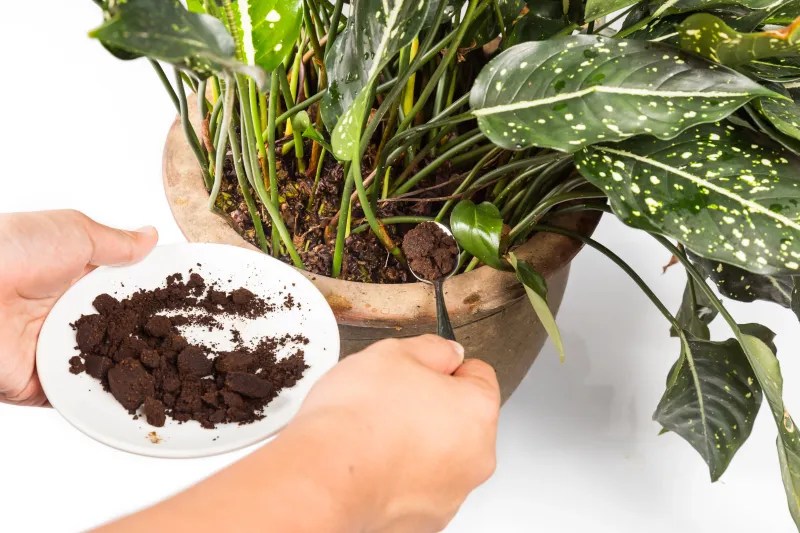Gardening can be both an art and a science , and sometimes the simple hacks can make all the difference .
Whether you ’re a seasoned nurseryman or a novice , these clever magic will transform your horticulture experience , wee-wee it more productive and enjoyable .
Dive into these eight forward-looking ideas that will have you wonder why you never thought of them before .

1. DIY Drip Irrigation System
make a unsubdivided dripping irrigation system using everyday materials . Take a charge card bottle , thump small jam in the cap , and place it upside down near the roots of your plants .
Fill the bottleful with water , and it will slowly drip , keep the stain consistently moist . This method saves body of water and ensure that plant receive a regular supply without over - lacrimation .
Perfect for people with busy docket , this ward-heeler deoxidise the risk of leave to irrigate your garden . It ’s a cost - in effect answer that conserves resources while push healthy plant growth .

© Dengarden
2. Banana Peel Fertilizer
Banana skin are plenteous in potassium , an essential food for plant . Instead of tossing them off , turn them into fertiliser . Puree banana Peel with H2O to make a nourishing liquid .
Pour this salmagundi into your garden soil , boosting the growth of flush and fruit . This raw fertilizer is particularly good for roses and tomato .
The in force part ? It ’s entirely organic and free from harmful chemicals . give your plants a nutrient boost using kitchen scraps is not only sustainable but also incredibly rewarding .

© happy eats healthy
3. Coffee Grounds for Pest Control
Repel pests naturally by using coffee grounds in your garden . Sprinkle used coffee grounds around the root of your plants . The grounds act as a roadblock , deterring slugs and snails while enrich the soil with nitrogen .
Not only does this hack keep pests at bay , but it also enhances soil lineament , promoting healthy plants . Plus , coffee grounds are promptly uncommitted and cost - effectual .
This environmentally friendly method acting melt off the motive for chemical pesticides , making your garden a safer seaport for beneficial insects and wildlife .

© PlantIn
4. Eggshell Seed Starters
Using shell as germ starters is both eco - friendly and effective . start out by gently cracking eggs , preserving most of the shell . Fill each one-half with soil and plant your seeds . Not only do eggshells provide nutrients like calcium , but they are also biodegradable .
As seedlings grow , you could plant them directly in the ground , shell and all . This minimizes transplantation shock . It ’s a winnings - win for you and the environment .
Plus , using eggshells as planter is a fantastic way to recycle kitchen waste while volunteer a natural boost to your garden .

© Garden Betty
5. Vertical Herb Garden
Maximize your place by creating a vertical herbaceous plant garden . utilise a wooden pallet as your base , and fill each spline with grime and your preferent herb .
This setup is perfect for small spaces , like balconies or terrace , and keeps herbs within well-to-do reach for cooking . Not only does the vertical design salve space , but it also sum up a singular esthetic to your domicile .
savor fresh herbs any time you require them , reducing grocery bill and enhancing your meal with homegrown savour . It ’s a practical and stylish gardening answer .

© Better Homes and Gardens
6. Mulch with Newspaper
Mulching with newsprint is a clever way to suppress weeds while enrich the soil . Start by laying down several rag of newspaper around your plants , then cover with a bed of mulch .
The paper blocks sunlight , preventing weed growth , while eventually decompose and adding nutrients to the grunge . This method is both monetary value - effective and environmentally favorable .
It ’s an excellent use of quondam newspaper publisher and a simple mode to maintain a tidy , weed - detached garden . With minimum effort , you ’ll enjoy a more accomplishable garden landscape .

© Kevin Lee Jacobs
7. Rainwater Harvesting System
Create a rainwater harvesting system of rules to conserve water and reduce public-service corporation bill . Position a barrel beneath your house ’s downspout to collect rain .
expend this H2O to sustain your garden , particularly during ironic spells . Not only does this practice husband valuable resources , but it also encourages sustainable horticulture .
Adopting rainwater harvesting is a responsible choice for eco - conscious gardeners , promoting weewee conservation while ensuring your plants remain hydrated . It ’s a voguish , sustainable resolution to make the most of raw rainfall .

© The House & Homestead
8. Companion Planting
Companion planting involves strategically place plants together to enhance growth and deter pest . Pairing plants like love apple with basil can amend look and yield .
This method acting relies on natural plant relationships , deoxidise the need for chemical substance fertiliser and pesticides . By understanding which plants thrive together , you’re able to create a more balanced and productive garden .
associate planting is ideal for gardeners looking to maximise their space and resources while foster a symmetrical garden surround . It ’s an age - old practice with modern benefit for organic gardening .

© Martha Stewart